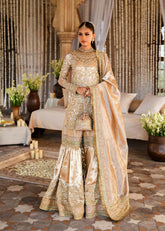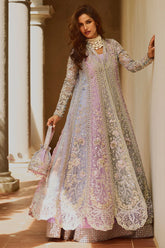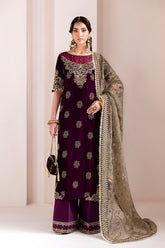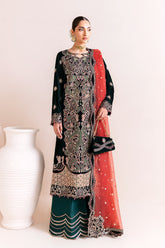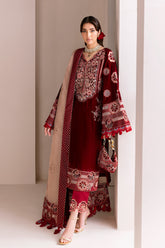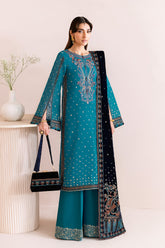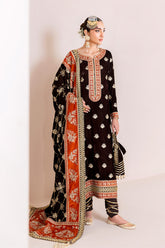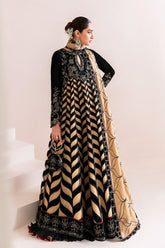A Guide to Traditional Pakistani Clothing: Shalwar Kameez, Lehenga, and More
Pakistan’s rich cultural heritage is reflected in the vibrant and diverse traditional clothing worn across the country. From the bustling streets of Karachi to the serene valleys of Hunza, the clothing styles are not just a representation of local aesthetics but also embody centuries of history, tradition, and craftsmanship. Among the most iconic garments are the Shalwar Kameez, Lehenga, and various other traditional outfits, each with its own unique significance and charm. In this guide, we will explore these garments in-depth and understand the roles they play in both everyday life and special occasions.
1. Shalwar Kameez: The Quintessential Pakistani Garment
The Shalwar Kameez is undoubtedly the most iconic and widely recognized garment in Pakistan. It is worn by both men and women and serves as the national dress of Pakistan. Comprising of two main components—the kameez (a long shirt or tunic) and shalwar (baggy trousers)—this outfit is known for its comfort, versatility, and timeless appeal.
History and Origins:
The roots of the Shalwar Kameez can be traced back to the Mughal era in the subcontinent. It became popular due to its comfort and ease of movement. Over the centuries, it has been adapted to various regional tastes, replica dresses, leading to different styles of kameez and shalwar depending on the area. In Pakistan, the Shalwar Kameez has become a symbol of national identity and pride.
Different Styles and Variations:
- For Women: The women’s version of the Shalwar Kameez is often made of soft, flowing fabrics like cotton, chiffon, silk, or velvet, depending on the occasion. The outfit is frequently paired with a dupatta (a long scarf or shawl) that adds an element of grace and modesty. In contemporary fashion, the cut of the kameez may be straight, A-line, or even asymmetrical, with ornate embroidery, beadwork, and lace accents.
- The straight cut kameez is a classic choice for everyday wear, while the frock-style kameez is a popular option for weddings and festive occasions.
- The shalwar can also vary—traditional baggy shalwars, known as pajama, are widely worn, while churidar pants, which are more fitted and gathered at the ankles, are a more modern and formal alternative.
- For Men: Men’s Shalwar Kameez tends to be simpler and more minimalist in design. It is often made from cotton or linen for hot weather and may include a button-down shirt with a relaxed fit. For formal occasions, men’s Shalwar Kameez is made from luxurious fabrics like silk or velvet such as hussain rehar pret.
- The shalwar, while traditionally baggy, can be tailored to different preferences, and men often accessorize their Shalwar Kameez with a waistcoat (called a safari jacket) for a more polished look.
Cultural Significance:
The Shalwar Kameez plays a central role in the daily life of Pakistanis. It is worn by people of all ages, from students to professionals, and across all social strata. It also holds immense cultural and religious significance, fancy replica dresses often being worn at important life events like weddings, religious ceremonies, and community gatherings.
2. Lehenga: The Bridal and Festive Ensemble
Another prominent garment in Pakistan’s fashion repertoire is the lehenga, which is traditionally associated with weddings and festive occasions. A lehenga is a long, voluminous skirt paired with a fitted top called a choli, and often accompanied by a dupatta (a scarf or shawl).
History and Evolution:
The Lehenga has its origins in the ancient subcontinent but has evolved significantly over time, influenced by Mughal, Persian, and Central Asian styles. In Pakistan, the lehenga is typically reserved for brides or for women attending major ceremonies like mehndi (pre-wedding festivities) or Eid celebrations.
Design and Fabrics:
- The Lehenga is typically made from heavy fabrics such as silk, brocade, satin, or organza, adorned with intricate embroidery, mirror work, beads, and stones. The use of gold or silver thread in embroidery adds to the richness of the garment.
- The Choli, worn on top, is usually form-fitting and designed to highlight the bride’s figure. The choli often features elaborate embellishments, and it may be short or long-sleeved, depending on the design and the occasion.
- The Dupatta is a signature piece of the lehenga ensemble, draped elegantly over the shoulder or head, contributing to the overall regal appearance.
Bridal Lehenga:
The bridal lehenga is particularly stunning and considered one of the most significant fashion statements in Pakistani weddings. Traditionally, bridal lehengas are designed in shades of red, maroon, or gold, symbolizing prosperity, love, and passion. Brides are often seen in multi-layered, embroidered lehengas paired with dazzling jewelry, such as maang tikka (headpiece), jhumkas (earrings), and haath phool (bracelet worn on the hand).
3. Saree: The Timeless Elegance
While the saree is more traditionally associated with India, it is also worn in certain regions of Pakistan, particularly in areas with a strong cultural connection to South Asia’s common history. The saree is a single piece of cloth, usually six to nine yards long, draped elegantly around the body, leaving one end hanging over the shoulder.
In Pakistan, the saree is often worn for formal events and weddings, especially in cities like Karachi, where modern fusion fashion has combined elements from both Indian and Pakistani cultures. Sarees are usually made from fine fabrics such as chiffon, silk, georgette, and crepe, and are often richly decorated with embroidery, sequins, and beads.
4. Sherwani: Men’s Formal Wear
For formal events, particularly weddings, men often wear a Sherwani, a long coat-like garment that is buttoned up to the neck. It is typically paired with churidar pants (tight-fitting trousers), and often worn with a pagri (turban) or a traditional scarf. The sherwani is known for its intricate embroidery, and can be made from luxurious materials such as brocade or velvet.
The Sherwani has become an iconic garment in South Asian weddings and is often worn by grooms, making it one of the most important pieces of men's formal attire in Pakistan. It is often tailored to fit the individual, creating a regal, royal look that is synonymous with celebration and luxury.
5. Chadar and Jubbah: Regional VariationsPakistan’s regional diversity is reflected in its traditional clothing styles as well. For example, the Chadar, a large rectangular cloth worn over the shoulders, is popular in Balochistan, often worn over a simple shalwar kameez. The Jubbah, a long robe-like garment, is often worn in the northern regions, particularly in Khyber Pakhtunkhwa and Gilgit-Baltistan, where it is paired with traditional hats and boots to complete the look.
Conclusion:
Traditional Pakistani clothing is a reflection of the country's rich cultural and historical diversity. From the ubiquitous Shalwar Kameez, which serves as a symbol of national identity, to the ornate bridal Lehenga and the regal Sherwani, each garment carries its own story, telling the tale of Pakistan’s centuries-old traditions, royal influences, and modern-day fashion. Whether worn daily or on special occasions, these clothes not only provide comfort and elegance but also represent the cultural pride and craftsmanship of the region.
In today’s modern world, Pakistani traditional clothing continues to evolve, blending classic styles with contemporary trends. Nonetheless, the essence of these garments remains unchanged, offering a glimpse into the soul of Pakistan’s rich cultural legacy.

